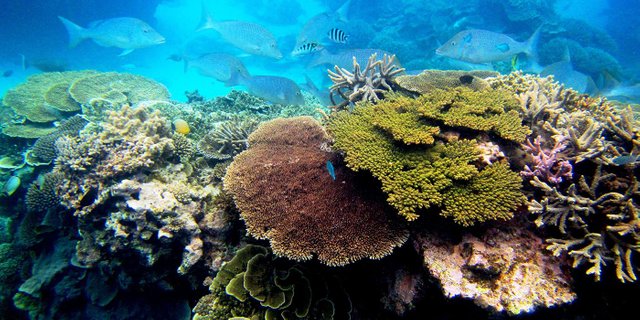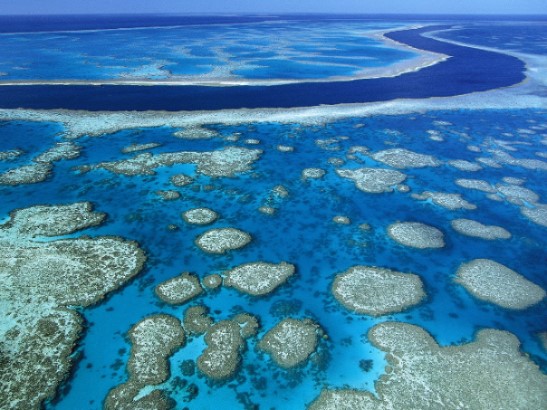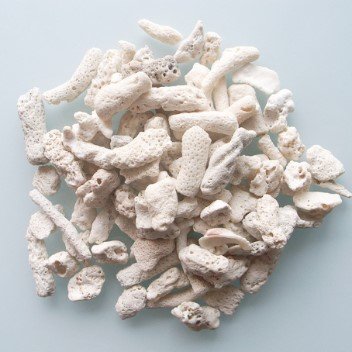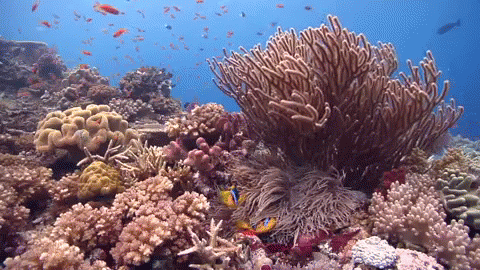
Corals are soft-bodied organisms that use aquatic minerals to build their hard layer of protective limestone. When a coral dies, it leaves its hard cover. Year after year, for millions of years, generations of corals have lived and died. Each generation of corals has added a layer of limestone.

After a while a coral reef is formed, like the reef of the Great Barrier Reef, off the coast of Australia. The upper layer of the reef has live corals. But beneath these "living stones," there are coral remains that lived millions of years ago, when the dinosaurs walked on Earth.
What do corals and bones have in common?
Until a few years ago, it was believed that Corals and Bones did not have much in common. Today, however, there are more similarities between corals and bones than it seems. And these similarities have made coral an excellent substitute for bones in the repair of severe bone fractures.
Because coral resembles bone, doctors have recently started using it to replace bone. Before the coral is inserted into the body, it heats up. The heat changes the limestone (calcium carbonate), which is the main ingredient of the bone. In the process, living coral organisms are killed.
When placed at the fracture site, the coral adheres to the bone. The labyrinth of coral channels serves to form passages where the blood vessels of a nearby bone can grow. The result is a link between bone and coral. After a while, the coral is filled with new bone.
Coral grafts should be precursors of bone formation. That is, they work as scaffolds for the human body to regenerate lost bone.
As the depredation of marine species is not available, in addition to some species of coral they could present diseases. Core Bone, a company based in Israel, uses corals grown in a plant that operates in the middle of the Negev desert.
These crops have a special treatment to prevent diseases.

Because coral is made like bones, the body does not reject it as if it were a strange substance. In other words, coral does not seem to activate the body's immune system (defense system against foreign substances). Therefore, the coral remains intact and the body remains unharmed by the new bone growth.
Several ancestral cultures attribute to coral reefs, great therapeutic properties for diseases.
It is a pity that coral reefs are lost in the world, due to climate change and the acidity of the waters, while scientists continue to discover in the coral ecosystem a great potential for the development of medicines for asthma or cancer.

Information sources:
- https://elcomercio.pe/tecnologia/ciencias/cientificos-cultivan-corales-fabrican-implantes-oseos-humanos-335189
- http://www.semana.com/vida-moderna/salud/articulo/huesos-de-coral/11176-3
- The great coral reef- Australia
- https://es-us.noticias.yahoo.com/blogs/ciencia-curiosa/una-nueva-t%C3%A9cnica-para-regenerar-huesos-humanos-a-partir-de-corales-211904719.html
We would all really appreciate some references to the information you've used, so it's not plagiarism, and further reading, of course!
Downvoting a post can decrease pending rewards and make it less visible. Common reasons:
Submit
Thanks for your advice, I have already added the sources I have used for this information. I apologize for ignoring that!
Downvoting a post can decrease pending rewards and make it less visible. Common reasons:
Submit
Congratulations @osmerj! You have completed some achievement on Steemit and have been rewarded with new badge(s) :
Click on any badge to view your own Board of Honor on SteemitBoard.
For more information about SteemitBoard, click here
If you no longer want to receive notifications, reply to this comment with the word
STOPDownvoting a post can decrease pending rewards and make it less visible. Common reasons:
Submit
Very interesting and very educational.
Downvoting a post can decrease pending rewards and make it less visible. Common reasons:
Submit
Nice post @osmerj. Thanks for sharing. Coral are vary beautiful in appearance. Thanks for the information about similarities in bone and coral.
Downvoting a post can decrease pending rewards and make it less visible. Common reasons:
Submit
Because of this post I learnt something new today! Thanks @osmerj
Downvoting a post can decrease pending rewards and make it less visible. Common reasons:
Submit